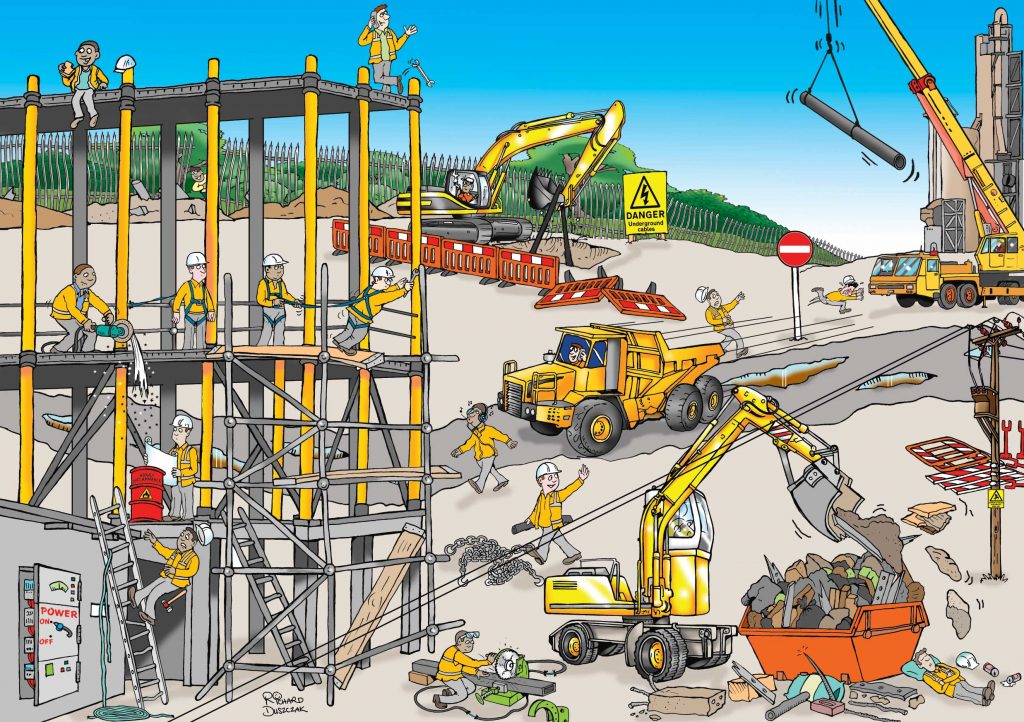GEM Engserv Pvt. Ltd is an ISO 9001:2015 certified organization, certified by TUV India in accreditation with National Accreditation Board for Certification Bodies (NABCB).
GEM Engserv Pvt. Ltd is an ISO 9001:2015 certified organization, certified by TUV India in accreditation with National Accreditation Board for Certification Bodies (NABCB).

Unsafe acts by employees and unsafe conditions prevailing at the site are two fangs of the dangerous reptile that causes accidents. While unsafe acts can be sought to be eliminated through toolbox talks and behaviour-based safety tools, unsafe conditions need to be eliminated through routine management action. Based on our experience of auditing a number of construction projects, we are presenting below a short list of the most common safety hazards any auditor has a good chance of spotting at any construction site in India!
Apart from listing the common hazards, we try to assess why these things happen and what organizations can and should do about it.


Falls to a lower level account for many injuries and fatalities. Scaffolding and ladders are regularly among the most frequently cited violations.
Hazard associated with working at height can originate from a lack of understanding. Organisations may not know they have to provide fall protections, or the fall protection gear may not be worn properly or not hooked up to anything. Some organisations do not even have written fall protection process.
Organisations need to identify all locations where fall protection is necessary – as well as where the engineered anchor points are – and train employees and regularly audit the fall protection program.



Clutter blocking fire exits, aisles and emergency exits is a common housekeeping problem. Over-stacking loads on racks, bringing them too close to a sprinkler head limits the sprinkler’s effectiveness in emergency. Clutter, leaks or standing water contribute to slips, trips and falls. Poor housekeeping, apart from the visual shock is also a cause of many minor injures and even Quality issues.
Employees should not wait for the housekeeping team to take care of these issues. Setting asides a few minutes at the end of each workday, or on weekend afternoons to clean up before leaving for the day is an easy way to manage clutter. Each site team member, including management, should understand good housekeeping practices and their advantages to prevent large number of accidents at work.
Many electrical hazards spotted are related to inappropriate use of extension cords. Although extension cords can be useful for temporarily supplying power for certain operations, the key word is “temporarily.” When a cord is used for several weeks or months, it does not remain temporary use anymore. This opens the door for a violation.
Extension cords lying on the ground for extended periods of time are a trip hazard. When cords are daisy-chained, they can easily overdraw electricity from the circuits, causing the wires to heat up and potentially result in a fire.
Organisation should assess whether extension cords are truly being used as a temporary measure. The cord should be gathered up at the end of the day and stored. A system to periodically inspect extension cords, and training employees on that system to ensure the cords stay in good working condition should be established. Worn-out cords need to be placed out of service.
Proper lockout/tagout procedures helps prevent serious injuries, if followed religiously. Many organisations have got excellent work procedures for it but it is the implementation that fails. Violation of lockout/tagout procedures often occurs due to ‘A rush to finish the work’ and/or ‘Being unfamiliar with the equipment.’ Even if all lockout/tagout steps are followed, faulty equipment can still lead to failures.
Organisations need to train employees on lockout/tagout and ensure that they are qualified to carry out the procedures.
Chemicals can be expensive, and site engineers may never know when they will need to use a certain chemical again in the future. They often need to be transferred and transported after single use. This can lead to serious hazards. Transferring chemicals is another potential hazard if the container is not labelled as required under the standards.
The project team needs to know what the chemicals are for and why they were ordered. The expiration date should be marked, and the chemical should either be used by that date or disposed off properly. Stockpiling a huge cache of unwanted chemicals can be illegal. It also can be very expensive to dispose off large quantities of expired chemicals.
Organisations should establish a culture in which Safety becomes everyone’s responsibility and workers feel comfortable reporting hazardous processes. Leadership sets the tone. Spending a little bit of money up front on prevention can help save money enduring execution.